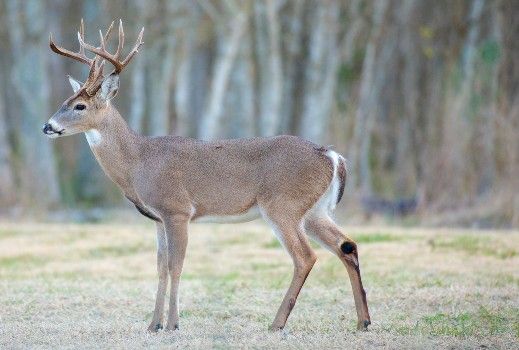
Mounting evidence is supporting the spread of SARS-CoV-2 in animals. The latest report is from Ontario, Canada, and has added to the evidence that white-tailed deer can become infected with SARS-CoV-2. This report comes on the heels of another report documenting spread of the Omicron variant in Staten Island deer. SARS-CoV-2 was first reported to infect white-tailed deer on January 12, 2021. This first report was also from Ontario, Canada. Other reports have found SARS-CoV-2 in up to 82.5% of deer (80 of 97 samples) in Iowa; and in deer residing in Michigan, Pennsylvania, Illinois, and New York.
The recent study from Ontario presents several disturbing findings. The SARS-CoV-2 virus found in the deer was a highly mutated virus, with 49 mutations compared with the closest known strain in humans. This is “suggestive of sustained viral transmission.” In other words, the virus may have found a stable host or reservoir in the white-tailed deer population. The authors also point out that there are significant human-to-deer interfaces, along with interfaces with other wildlife.
The authors believe the newly detected Ontario white-tailed deer virus (Ontario WTD) may have its distant ancestor from a lineage identified in Michigan. Thus, the Ontario WTD likely represents a case of spread from humans to deer.
Of concern is that the authors also presented information that supports a case of deer-to-human spread of this highly divergent variant. The human case had “highly similar mutations” as the Ontario WTD virus, occurred in the same region as the infected animals, and the patient also had known close contact with white-tailed deer.
Infection Control Today® was one of the first to report animal SARS-CoV-2 infections and the possibility of animal hosts on August 5, 2021. Spread of the virus in animal hosts was 1 of mechanisms of virus evolution, which was proposed by the United Kingdom’s Scientific Advisory Group for Emergencies (SAGE).
We cannot assume that white-tailed deer are the only animal hosts (or virus reservoirs) or that deer were exposed directly from humans. There could be an intermediate host. Dogs, cats, bears, gorillas, baboons, snow leopards, minks, and rodents can also carry the virus. Rats have been implicated in the emergence of the Omicron variant (this variant carries 7 out of the 7 mutations that promote transmission in rodents).
There are several important lessons here:
1. The virus is spreading easily outdoors among deer. The same should be true with mankind. Droplet spread can still occur outdoors if you are within 6 feet of someone.
2. An animal host all but guarantees that herd immunity in humans will not eradicate the virus.
3. The variants arising in animals will have no regard for the lethality in humans. Thus, increases and decreases in the variant’s human case fatality rate will be random. The virus does not need humans to live and evolve.
Above all, the report by Bradley Pickering et al underscores the importance of One Health, the idea that animals and mankind live in the same biosphere and you cannot optimally promote health in mankind without also addressing the health and spread of disease in animals. It is unlikely we can stop the emergence of future dangerous variants by vaccinating all of mankind. We must also address the health of animals and modify how we interact with domesticated and wild species.
Mutated SARS-CoV-2 Detected in White-Tailed Deer in Ontario - Infection Control Today
Read More

No comments:
Post a Comment